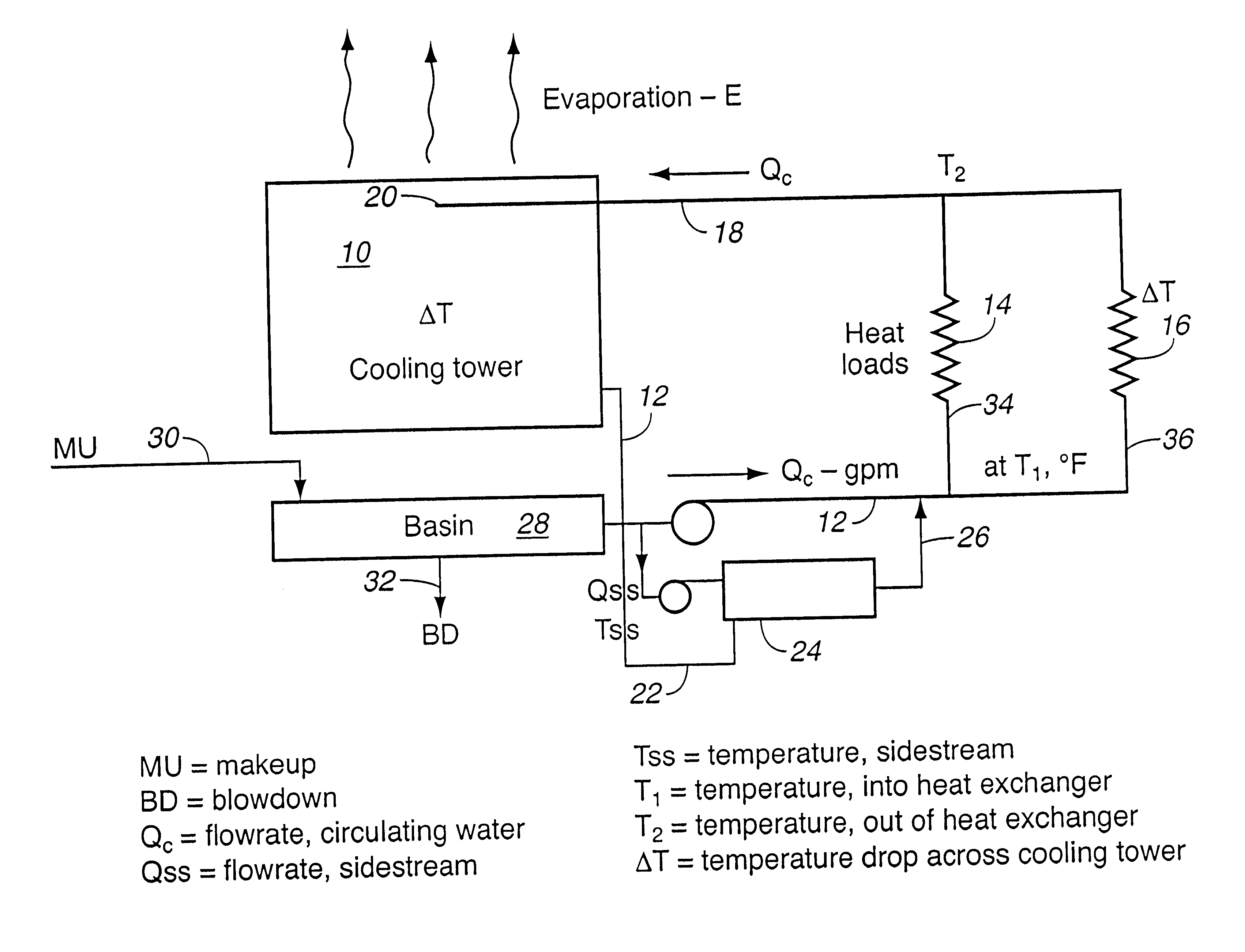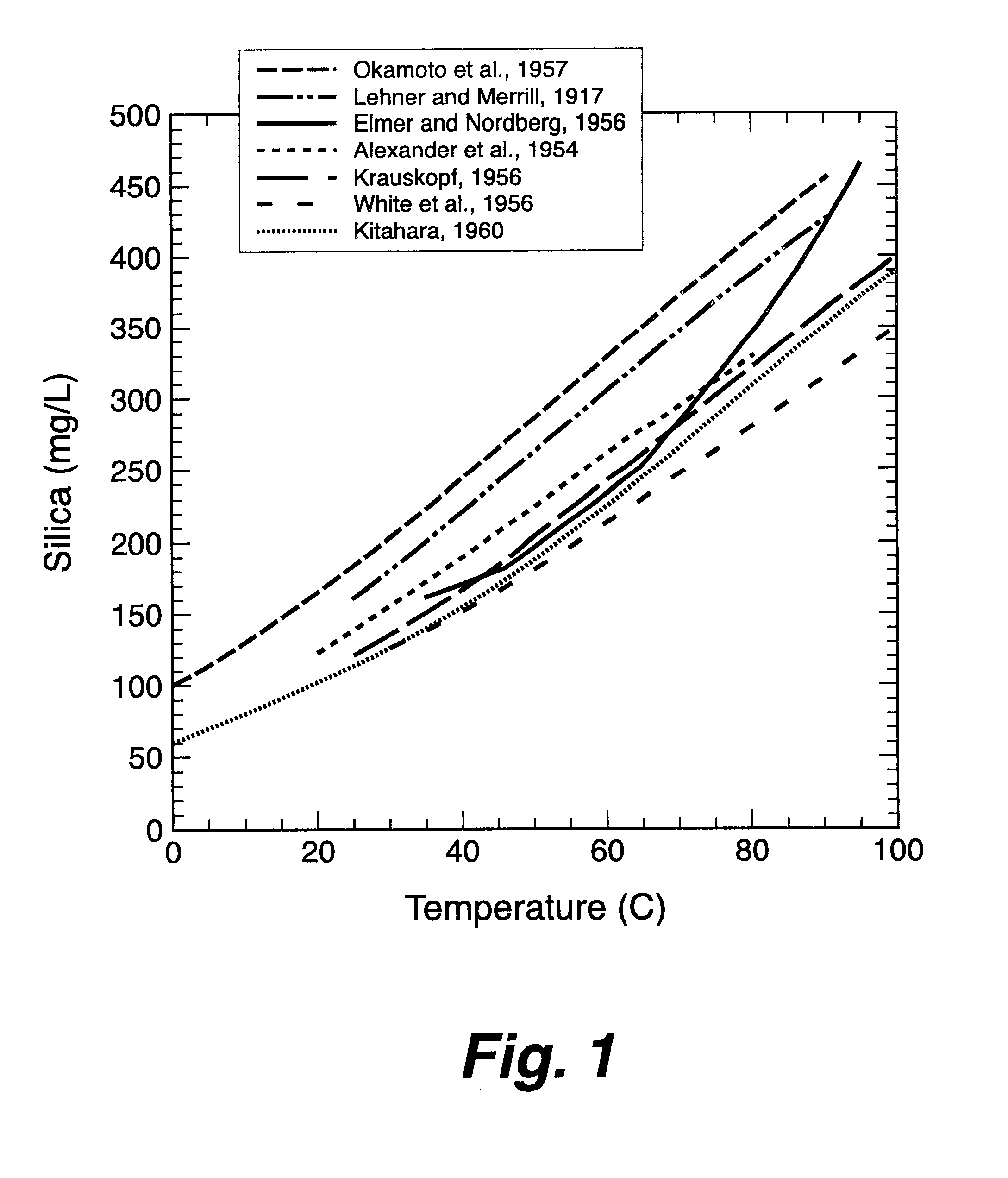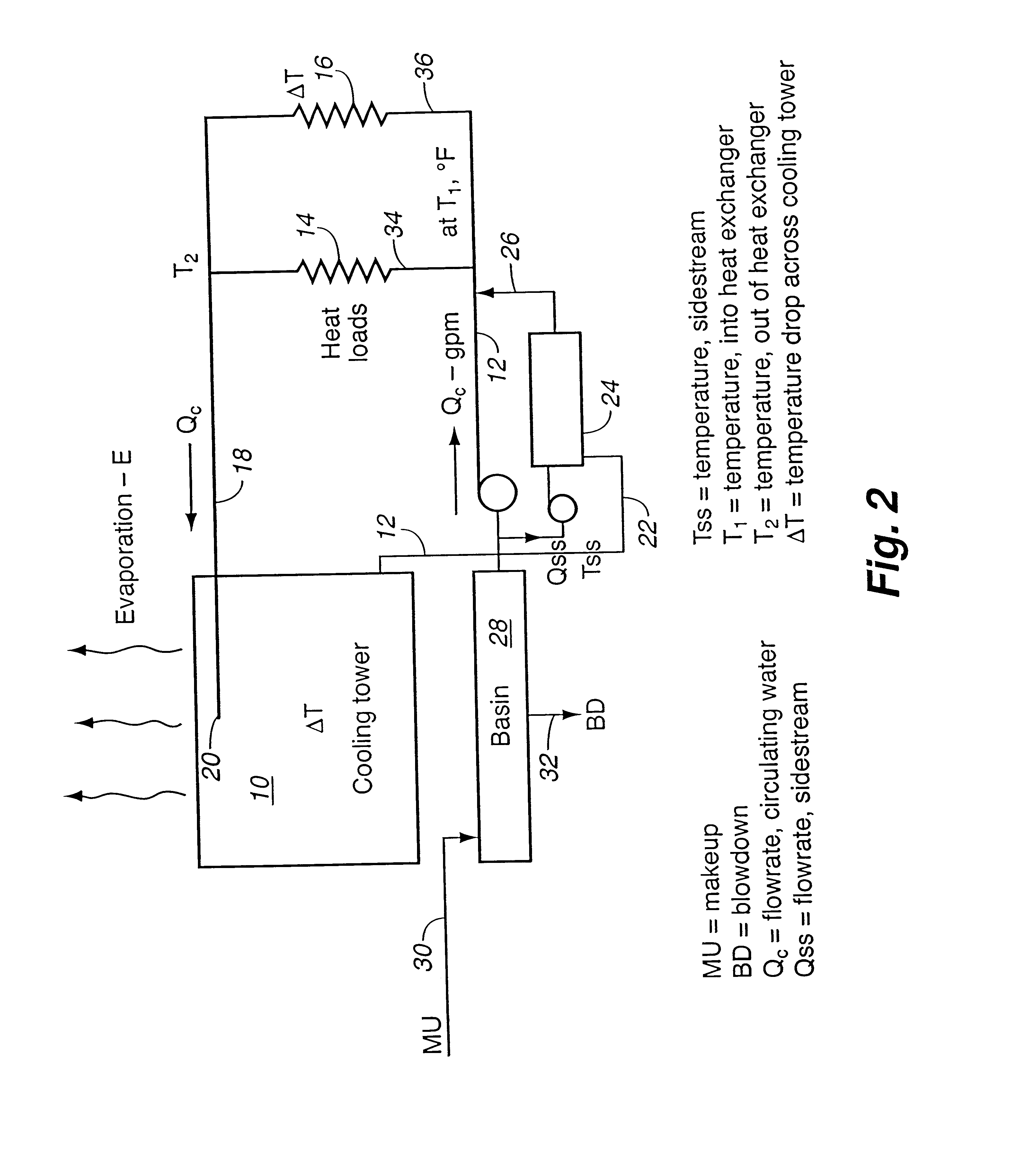Removal of dissolved and colloidal silica
- Summary
- Abstract
- Description
- Claims
- Application Information
AI Technical Summary
Benefits of technology
Problems solved by technology
Method used
Image
Examples
example i
For comparative purposes, operating parameters of a conventional evaporative cooling tower were examined. The soluble (color reactive) silica concentration in the makeup water was approximately 90 mg / L. In the summer, under high heat load, the temperature drop across the cooling tower was from 90.degree. F. to 75.degree. F. The theoretical steady-state silica solubilities varied from 213 mg / L at 9.degree. F. (32.degree. C.) to 181 mg / L at 75.degree. F. (24.degree. C.). Because the kinetics of silica deposition are relatively slow, only a portion of the "supersaturation" may actually deposit in the water cooling tower and virtually none will deposit in the hotter heat exchanger. When operated at 2.2 cycles of concentration at 90.degree. F., there was substantially no deposition of silica.
Hotter operation permits greater reliability of scale free operation at that same level of water consumption.
Then, in winter, the temperature variation was from 75.degree. F. to 60.degree. F. The the...
example ii
This example is a calculated illustrative bench top test of the principle of the invention to prove operability of the invention.
Several isotherm runs are made using samples of cooling tower water or water taken from a pilot plant evaporative process.
Each of the samples is chilled or heated to a different temperature, a temperature that would occur in each of various parts of a cooling tower system. Silica solubility and concentration at each temperature is tested using a molybdate reaction to form a color whose intensity is proportional to silica concentration. Samples are pre-stabilized at the test temperature using a test procedure available from Rohm and Haas as ACUMER TST.SM. Total Silica Test for High-Silica Waters.
A 30-mL sample is mixed with distilled water and the tetra-sodium salt of EDTA. The mixture is further diluted to 1-L with distilled water. The tetra-sodium salt form of EDTA is the most basic form of EDTA. As a base, it raises the pH in the sample, completely conve...
example iii
In a calculated constructive reduction to practice, silica deposition is controlled and removed so that water is evaporated to 5 cycles of concentration (compared to the usual 2 to 2.5 cycles of concentration) and makeup water is reduced by 33 to 37.5%.
A fluidized bed reactor is filled with small spherical amorphous silica beads available from DeGussa AG, to provide a high surface area. For initial evaluation, the silica beads are from about 7 nm (300 m.sup.2 / g) to about 20 nm (m.sup.2 / g) and are relatively non-porous and non-soluble in water.
The fluidized bed reactor is connected by a sidestream or full-flow conduit to a bench-scale or test-scale evaporative cooling tower. The heat exchanger, fill, basin and circulating conduit are first cleaned manually or chemically or both so that the start up is with clean evaporative cooling tower surfaces.
Locally available water with a concentration of silica at near 100 mg / L and at pH less than 9.0 is used to supply the experimental or tes...
PUM
| Property | Measurement | Unit |
|---|---|---|
| Angle | aaaaa | aaaaa |
| Temperature | aaaaa | aaaaa |
| Surface area | aaaaa | aaaaa |
Abstract
Description
Claims
Application Information
 Login to View More
Login to View More - R&D
- Intellectual Property
- Life Sciences
- Materials
- Tech Scout
- Unparalleled Data Quality
- Higher Quality Content
- 60% Fewer Hallucinations
Browse by: Latest US Patents, China's latest patents, Technical Efficacy Thesaurus, Application Domain, Technology Topic, Popular Technical Reports.
© 2025 PatSnap. All rights reserved.Legal|Privacy policy|Modern Slavery Act Transparency Statement|Sitemap|About US| Contact US: help@patsnap.com



